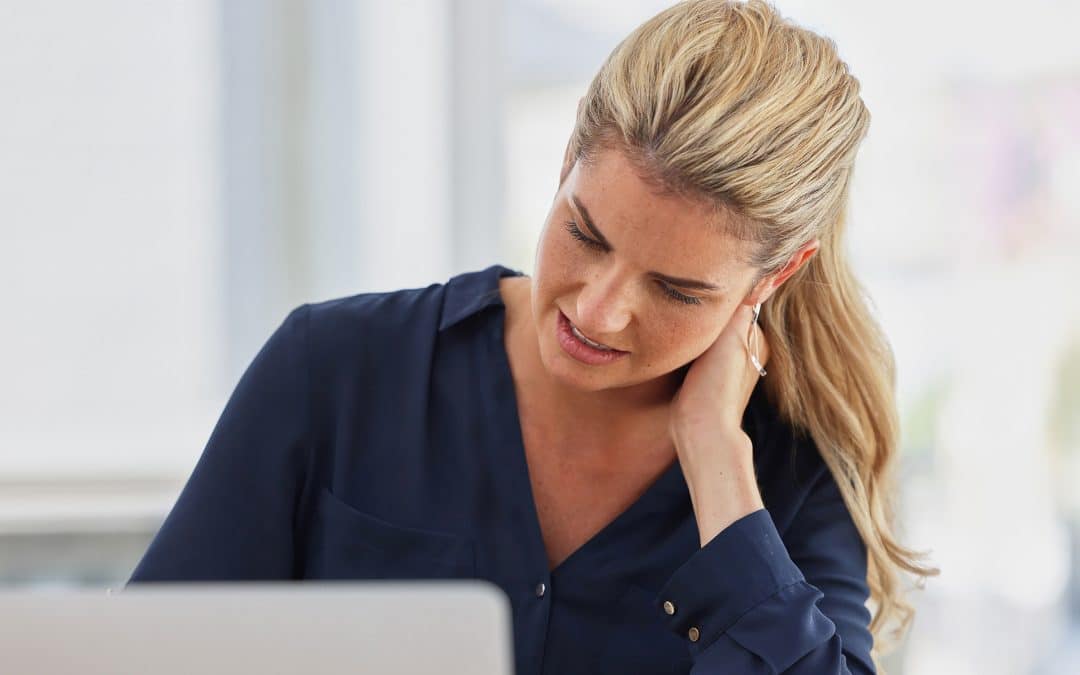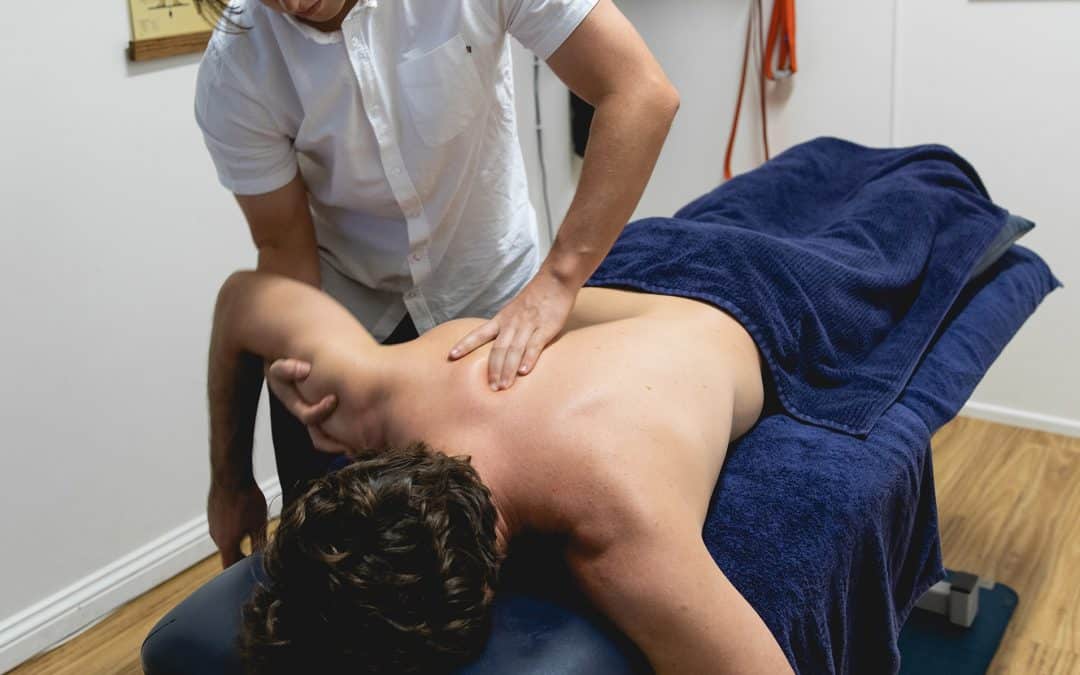I recently attended a continuing professional development workshop headed by a world-renowned musculoskeletal specialist. The theme of the seminar was the diagnosis of back pain and in particular, disc pathology. Attendees included medical doctors, osteopaths, and physiotherapists.
The accurate diagnosis of back pain is a hot topic for us in the pain management industry. Did you know that approximately 82% of the adult population will experience back pain during their life? Even so, back pain continues to be poorly managed despite the growing amount of evidence that shows the importance of a physical examination. This simple step is still often overlooked.
Why do we need a physical exam? Can’t we just have an X-ray-CT or MRI scan that will surely show us what has happened, right? Unfortunately, that’s not the case.
Increasingly, we are finding that X-Ray, CT and MRI scans fail to identify the cause of the back pain due to the high amount of false positive findings. For example, if you took X-Ray, CT and MRI scans of 50 random people, you would find many with arthritis, disc degeneration and disc bulges. However, the vast majority would have no outward symptoms of pain. Hence, these findings do not necessary mean that the results of the scan are the cause of the pain.
However with no better answer, often we correlate these results as the cause of pain and go down the road of invasive steroid injections and surgery which often prove to be ineffective.
Attendees at the conference discussed this issue and the consensus was that back pain is not black and white. There is now considerable evidence that a significant part of the solution lays in the clinical evaluation. A clinician such as an osteopath will gather information from the following sources:
- Patient’s history of onset.
- Factors that aggravate or relieve symptoms.
- A physical examination, which includes stressing the joint thoroughly in all directions.
The physical examination is a crucial step in the diagnosis of back pain. Studies over the last 15 years have shown that a physical examination can reveal useful information that makes effective management possible. Many of these refer to the phenomenon of pain “centralisation” and its helpfulness to clinicians in their clinical decision-making.
What do we agree the primary complaint of back pain is?
People often tell me they have sciatica or are informed by someone they have sciatica. Now, this term gets used a lot and even those in the medical profession often misuse it.
If you have an electric-like pain zinging or shooting down your leg on and off like an electric current, then that’s a type of nerve pain and its name is sciatic nerve pain. But it has to be electric, on and off, like you’ve hit your funny bone, but worse.
If it’s not like this, if it’s aching and constant, then it’s not sciatica. It’s called referred pain, and that is a different story.
Real sciatic nerve pain is a result of a direct compression of the sciatic nerve root exiting the lumbar spine most commonly caused by
- Intervertebral disc herniation
- Degenerative lumbar spinal canal narrowing
- Low-grade spinal infection affecting the sciatic nerve roots
- Single trauma or cumulative/repetitive microtrauma to lower back
- Pelvic instability or sacral base asymmetry
- Non-spinal conditions that involve the sciatic nerve such muscle spasm
- Pressure on pelvis during pregnancy that compresses sciatic nerve
- Trauma to buttock overlying sciatic nerve
If you have numbness (i.e. you can’t feel it when someone touches your skin), or you have a weakness (you can’t lift your foot, or bend your hip or knee), then that is a loss of nerve function and you need to get this diagnosed ASAP. You don’t want to muck around when it comes to nerve problems.
The Most Common Source of Back Pain
As much as we can tell from the many studies available, the most common source of back pain is the intervertebral disc and I want you to think of this like a ‘ligament sprain’. These discs – or individual ligaments – are what sit between each of your vertebrae and hold them together.
Now, when I say ‘disc’ I’m not talking about bulging discs or slipped discs. I’m talking about a sprain on the inside of the disc, called ‘Internal Disc Disruption’, and it can become very painful when it’s inflamed.
Question: What happens when you squash a disc that is sprained and inflamed?
Answer: Your brain creates an alarming pain signal for you.
Question: What squashes your discs the most?
Answer: Loading your spine when it’s in a FLEXED position (e.g. when your lumbar spine is curved forward).
Question: What movements while you are working increase pressure up the lumbar spine in a flexed position?
Answer: It’s all about how YOU use your spine during those tasks.
What Is Centralisation?
Centralisation of back pain refers to a phenomenon that shifts pain from a peripheral location i.e. the buttock and back of legs and moves it to a more central location in the lower back. The referred or radiating leg pain is due to displaced disc material that is stimulating the pain-sensitive nerve root of the outer portion of the intervertebral disc.
Accurate repeated end range movement could return the displaced material, which centralises and reduces the pain sensation. It might feel stronger in the central back before it fades. Then fades some more, and eventually (and hopefully), disappears. A major study (see below) shows that 44% and possibly as many as 89% of people with back pain can ‘centralise’ their pain if expertly guided through a particular process that I’ll describe in this post.
It does however only work for certain people and will not work for everyone. It’s easy enough to perform, so that’s not a barrier. The only thing you need to figure out is if you are a candidate for this technique. Scientists have been studying ‘centralisation’ for a few decades … and it is important for you to know if YOUR back pain will centralise because if it does, you might have just discovered a method for managing or even eliminating your back pain. (May S, Aina A. Centralization and Directional Preference: A Systematic Review. Manual Therapy, 2012; 17: 497-506.)
Many doctors and health professionals don’t know about this, which is why I’m writing this for you.
I’m going to share what to do, and how you can find out if this will work for you.
We use repetitive movements of your back in a particular direction. Officially, these are called ‘dynamic end-range movements’ or DERMS for short.
So, how do I do it?
I lie on my front, and with my hands placed next to my shoulders, I do a push up while keeping my pelvis on the ground. (Just like in the picture below.)
This creates ‘extension’ in my lower back, and I repeat this movement at least ten times in a slow, steady manner.
What if you’ve got pain as you push up?
You probably will have pain. So, here’s the rule. Follow this rule and 99/100 you’ll be okay.
If the pain gets worse in your gluteus, your leg or to the right or left of your spine … then stop and reassess.
But if the pain gets stronger in the centre of your back, and it’s tolerable, then keep proceeding with caution and confidence. Remember, before the pain fades, it often gets stronger in the centre of your back.
So, once you’ve done your first push up and dealt with any stiffness or pain that crops up, you just lower yourself back to the ground slowly. No need to rush this.
Push up again and down and up and down and repeat this at least ten times unless what?
Unless the pain is getting worse in your gluteus or leg/s. If this happens, you stop.
As I wrote earlier, during the centralisation process your pain might become stronger in the centre of your back before it fades. So, you have to be aware of this. If you bail at the very first sign of pain in your back, then you’ll never know if your pain will centralise.
This is why it’s best to do this with expert guidance but once you know how to do it yourself, you can do it yourself!
I’ll give further instructions … but again I strongly advise you to do this under expert supervision. I’m just describing it here so you know what to ask for, and what to expect.
1. Lie on your front, relax and then notice where you feel the pain.
If it’s just in the centre of your back, then you just stay lying straight.
If the pain is to the right, or in your right gluteus or leg, then shift your pelvis away from the pain (e.g. shift it to the left)
If the pain is to the left, or in your left gluteus or leg, then you move your pelvis away from the pain (e.g. to the right).
2. Place your hands in front of you and just outside your shoulder width. Keep your back, gluteus and legs relaxed the whole time.
3. Gently begin to push up while allowing your pelvis and legs to stay on the ground. The general aim is to extend your arms fully while your pelvis stays on the floor.
NOTE: You might not be able to do this … you might be too stiff, or you might feel pain. And this is where people ‘give up’ if they try it by themselves … again a great reason to have an expert guide you through it.
What if you’re too stiff and your pelvis starts lifting up off the ground as you push up?
You can just continue to see if it will work, or, if you’ve got an expert guiding you, they can apply pressure down on your pelvis or spine to keep it on the ground. That way, you’re pushing up against their resistance.
Now if this is all going well…
1. You repeat another 10 times. If there is any noticeable reduction in your pain, then this is a positive sign.
Perhaps your pain will not completely fade in the first session or the second or third but the REASON you would keep trying is that:
- Your pain is not getting worse
- Your pain is getting better and you notice that it gets better by doing this movement.
That is the main criteria to follow
2. Modify your position on the ground. Perhaps your pain was not exactly in the centre and you needed to shift your pelvis slightly to the right or left. You’ll know what I mean when you do this. A small shift of your pelvis to the left or right will feel very different when you push up.
3. Apply pressure down against your spine as you push up. You cannot do this by yourself and yet it can make all the difference. Another reason you need expert guidance with this. In my experience, the amount of pressure and the exact location of that pressure can also make all the difference.
If your pain doesn’t centralise you need to find another solution and I would insist on the search for that solution.
But imagine if you didn’t go through this process? Imagine if you gave up too soon? Imagine if your back pain can be centralised with this simple approach?
This is for your education purposes only. This post cannot replicate or replace expert assessment and guidance from a health professional qualified to treat pain. If you want to go one step further, don’t ‘just go to any health professional, go to one who has a particular interest in effective solutions for back pain.



